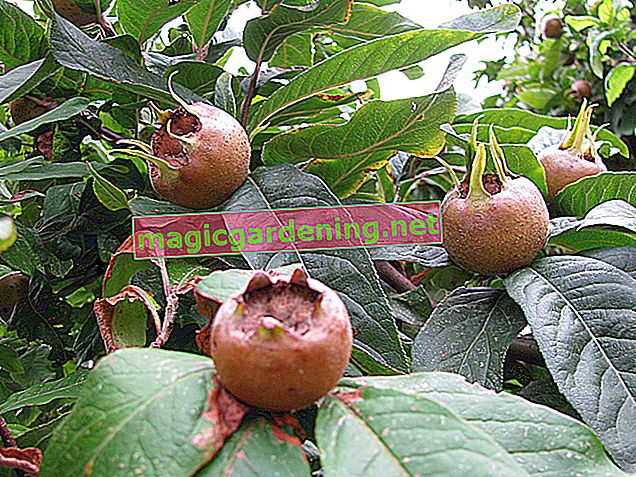
Method 1: sowing
You can use the seeds of the medlar to propagate the plant. However, this procedure is time consuming. To do this, the seeds contained in the ripe fruits are removed, the pulp is removed and cleaned. The best time to do this is between November and early December.
also read
- Which location does the medlar prefer?
- The loquat harvest time
- The medlar - poisonous or edible?
The seeds can be planted directly in the field. You can also sow the seeds in pots or boxes on the balcony or, after stratification, sow them in warm living spaces in damp sand or peat in spring. The seeds need a cold period to germinate. They remain viable for germination for a maximum of 20 months and should be used within this period.
But watch out: it can take up to two years for the seeds to germinate. In addition, it takes a long time for the plants obtained from them to produce their first fruits. For these reasons, it is less advisable to propagate the medlar using its seeds.
Method 2: cuttings
Propagation via cuttings is easier and faster than sowing. But it carries a risk. Since the loquat does not tolerate a cut, the cuttings should be taken sparingly.
That's how it's done:
- Ideally, take no more than 3 cuttings from a healthy and older mother plant
- Use annual, 15 cm long shoots
- Free the shoots from the lowest leaves
- Put shoots in glass with water or directly in the ground
- Keep the soil evenly moist
- Plant out in spring
Method 3 and 4: root cuttings and grafting
Furthermore, the medlar can be propagated using root cuttings. These can be taken all year round on frost-free days. Cultivated forms are usually propagated through grafting. It has been shown that the medlar bears the best fruit in terms of taste when it is refined on a pear. It can also be refined on quince or hawthorn.
Tips & Tricks
Young medlars should be given winter protection for the first two years after they have been released outdoors. They are only well winter hardy in their third year of standing.








